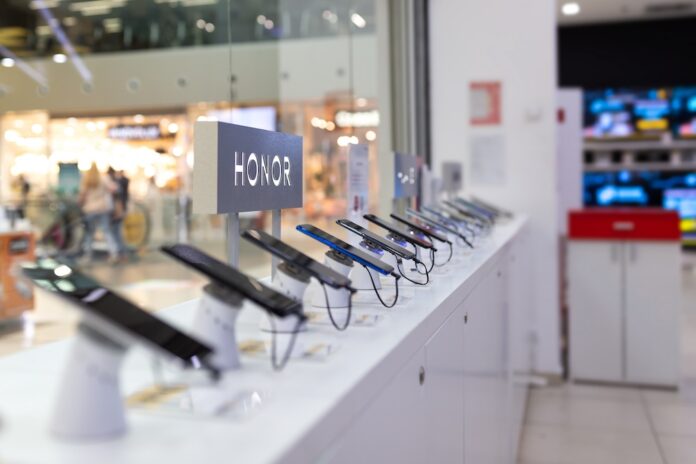Operators should prepare for continued margin pressure in the mass market handset segment
There’s an infamous meme on the internet called straining kid, which is an appropriate visual analogy to describe global consumer sentiment right now in the face of capricious geopolitics. The mobile sector is not immune to this pervading sense of uncertainty. According to Omdia’s Canalys the global smartphone market declined by 1% year on year in Q2 2025, marking the industry’s first decline in six quarters.
The analysts reckon the marginal shipment drop reflects stable vendor performances against a backdrop of cautious “consumer sentiment and increasing uncertainties and volatility in the global macroeconomic environment”. While Canalys, understandably like many observers these days, tends to describe the reason for the global malaise in almost mystical terms, it is patently obvious that the global economy is facing death by a thousand tariffs.
“Despite a market slowdown in Q2, driven by the fading replacement wave of pandemic-era devices and continued weak consumer demand, most vendors delivered stable and resilient performances,” said Canalys senior analyst Runar Bjørhovde. “Vendors are closely aligning operational efficiency prioritisations and tactical wins with scale.”

“Many vendors had greater aspirations in Q2 but were forced to cut their production targets to avoid excess inventory. The exception was in the US, where major uncertainties around tariff policies and timelines from the Trump administration have encouraged vendors such as Apple, Samsung and Motorola (Lenovo) to maintain high inventory levels and front-load devices throughout the quarter,” he said. “These are key operational tactics needed to navigate a complicated geopolitical and regulatory maze.”
Samsung still there
“After a slow start to 2025, vendors are now well placed and ready to navigate what is expected to be a flat year for the smartphone market,” said Canalys practice leader for smartphone research Amber Liu. “Many consumers who delayed purchases in the first half of 2025 are anticipated to buy during the major shopping festivals and events toward the end of the year.”
Samsung successfully defended its leading position in Q2, claiming a 19% market share, predominantly thanks to its Galaxy A series. Apple finished second with a 16% market share, while Xiaomi had a stable quarter with a 15% market share. vivo and TRANSSION completed the top five, each taking a 9% market share.
She said effective pricing and clever promotions are as important as ever for vendor success, as shown by Huawei’s and Apple’s reception during China’s 618 shopping festival in May. “Recent launch events have highlighted slimmer designs, ecosystem innovation and privacy protection narratives to tempt consumers to upgrade,” she said. “But price-conscious consumers looking for a good deal to replace their old devices will be the main demand driver.”
“Additionally, current healthy inventory levels in the channel will allow a boost to the replenishment of recently launched devices, which will help the industry return to growth in the second half of the year,” she added.
Mobile components tell a different story
Despite Canalys’s feeling that things may improve the second half it is worth delving into what the component supply chain is doing and unfortunately, it is telling a different story. Taiwan-based analysts TrendForce’s data provides a more reliable forward indicator because component demand typically leads finished device sales by 6-8 weeks. TrendForce states that “smartphone demand remains uncertain” for H2 2025, describing Q3 as a “subdued peak season”.
The components don’t lie – if suppliers aren’t seeing strong demand for smartphone-specific memory (eMMC and UFS), handset sales won’t materialise. Their 9 July report revealed that in the mobile sector, although China’s consumer electronics subsidy policy remains in place for the second half of the year, most consumer demand has already been satisfied. Additionally, the pull-in effect driven by US tariffs has weakened, resulting in lukewarm eMMC demand in Q3. This suggests that any artificial demand drivers have run their course, leaving the market to rely on organic replacement cycles.
What’s actually driving growth?
NAND Flash price increases of 5-10% are being driven by AI infrastructure and enterprise demand, not consumer devices. TrendForce said that increased enterprise investment in AI and mass shipments of NVIDIA’s Blackwell chips have provided strong support for the memory market. However, smartphone-specific components like eMMC and UFS are seeing much more modest price increases of only 0-5%, indicating weak underlying demand.
The supply chain dynamics reveal several concerning trends for smartphone demand. Suppliers have reduced production of low-end models and raised wafer prices, which has led to higher costs for module makers and dampened their shipment momentum. Some module makers are taking a more conservative approach to wafer procurement in Q3, given softening demand for consumer-grade NAND Flash in end markets.
The fact that suppliers are prioritising high-margin enterprise products over consumer applications suggests they don’t see a compelling reason to maintain capacity for smartphone components. When suppliers squeeze module makers and cause wafer inventories to rise, it typically indicates weak end-market demand rather than supply constraints, according to TrendForce.
The carrier conundrum
The component data, if right, suggests that mobile operators should avoid over-investing in mid-range inventory for H2. The lukewarm demand for smartphone memory components indicates that consumer upgrade cycles remain sluggish despite any manufacturer optimism. As a result, operators should prepare for continued margin pressure in the smartphone segment.
While premium devices may hold pricing power due to their differentiated features and loyal customer base, the mass market will face continued pressure as component costs rise modestly but demand remains flat. This creates a challenging environment where input costs are increasing while pricing power remains limited.
The modest price increases for eMMC and UFS components (0-5%) compared to enterprise segments (5-10%) suggest that smartphone manufacturers have limited ability to pass through cost increases to consumers. This will likely translate to continued pressure on device margins, which operators will need to factor into their discounts and marketing strategies.



